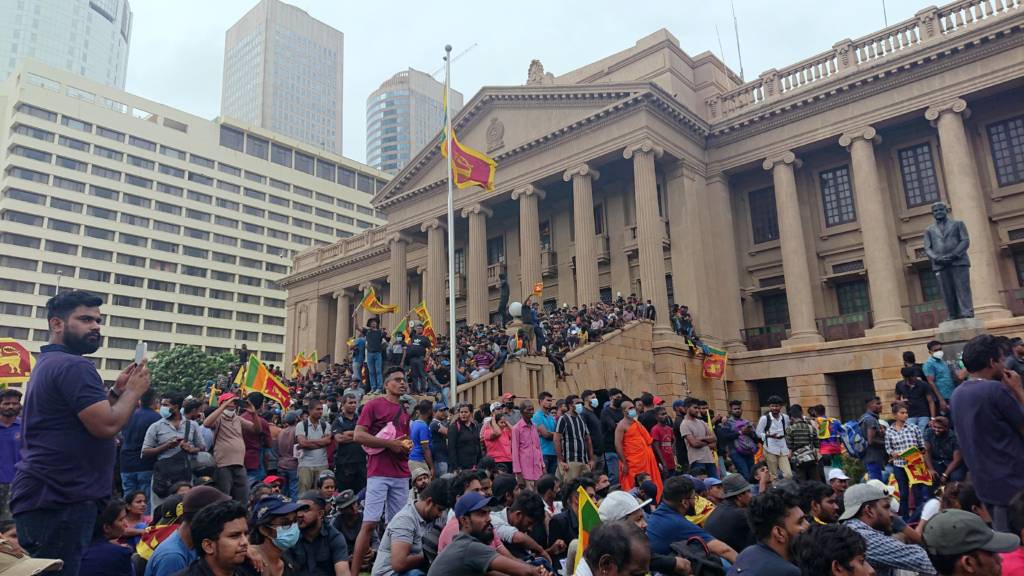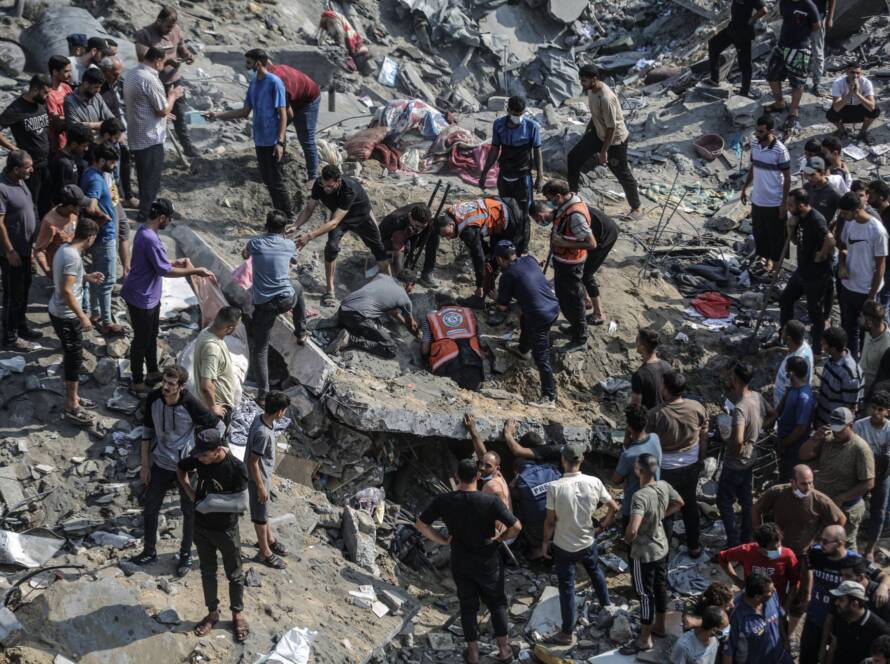
By Uditha Devapriya
Protest movements have historically been decided by economic factors, most prominently shortages, queues, and price hikes. The Arab Spring is an obvious case in point, but a better, more significant example would be the February Revolution in Russia, which was spurred by bread shortages. Left with nothing to lose, citizens have fought back by demanding mass resignations. For them no other reform will do, especially after the protests reach tipping point.
The aragalaya in Sri Lanka have, so far, borne this out well. What began as a protest against 10-hour plus power cuts in March evolved into a leaderless campaign, representing different interests, calling for the President’s resignation. In May, a month after Gotagogama, the site of the campaign, was set up, three incidents threatened to rupture the protests: the attack on protesters by supporters of the Prime Minister Mahinda Rajapaksa, the resignation of the latter, and the appointment of Ranil Wickremesinghe as his successor.
Mr Wickremesinghe’s appointment resulted in a section of Gotagogama leaving the protests. This was bolstered by what many saw as the new Prime Minister’s credibility. Since last year, Mr Wickremesinghe had warned against the government’s policies. In March and April he had made a series of predictions about the economy, requesting the government to enact urgent reforms. Given the accuracy of these predictions, even those demanding for Mr Rajapaksa’s resignation welcomed his appointment, believing his contacts with various countries, especially in the West, would help revive the economy.
On June 9 the country’s controversial and reviled Finance Minister, Basil Rajapaksa, resigned from parliament. By now the new Prime Minister had built a reputation for making dire predictions about the rest of the year. This was of course a complete turnaround from the previous policy, which was to deny the existence of an economic crisis in the first place. For some time, people welcomed the turnaround, claiming Mr Wickremesinghe as a realist who minced no words and cut no corners. Yet after a while, with fuel queues, gas shortages, and next to no international support, they began to grow tired of him.
Mr Wickremesinghe’s response was essentially that he had no other choice: the country had collapsed and there was no point beating about the bush. Unfortunately for him, the Indian fuel credit line, which had kept the economy afloat for three months, came to an end. While there had been hopes for a fresh credit line from July, Indian officials demanded payments for the fuel shipments they had sent so far. Since the government had done next to nothing to increase foreign reserves, they had no dollars to settle these payments.
Sri Lanka now has to spend around USD 550 million a month on fuel. To put this expense in perspective, it represents exactly half of the country’s coal requirements for the entire year. While the country’s Power and Energy Minister, Kanchana Wijesekera, tried to pacify people by claiming that letters of credit had been opened for two fuel shipments, these shipments never made it. The truth was that since April, when Sri Lanka defaulted on its foreign debts, suppliers have been demanding for full dollar payments prior to shipment.
The country was now, technically, out of fuel. As a result, the tensions that had dulled down in May after Mr Wickremesinghe’s appointment began picking up, fast. Two developments served to aggravate these tensions: the Prime Minister’s questionable attitude towards the protests, which he claimed to support, but which still faced harassment from the police, and Mr Rajapaksa’s decision to attend parliament. For the first time in the country’s history, Opposition MPs hooted a head of state out of its legislature, reinforcing popular demands for his resignation. Coming just days before the date for the revival of the aragalaya on July 9, it became a fitting portent of what was to follow.
It’s a sign of how desperate the President was that his response to the July 9 protest was to dispatch a press release stating that fuel and gas shortages would be resolved the following week. Meanwhile, the Inspector General of Police, C. D. Wickremeratne, seemingly taking matters into his hands, declared a police curfew – which lawyers quickly held had no legal basis. This was seen as part of the President’s strategy – though he did not declare a State of Emergency – so much so that, despite public bus services declaring a strike, people resolved to come in greater numbers, and in whatever way, to Colombo.
Though Prime Minister Wickremesinghe has declared his willingness to leave, President Rajapaksa has followed suit. The Speaker of the Parliament, Mahinda Yapa Abeywardena, informed Mr Rajapaksa early on of the party leaders’ conference, which recommended both resignations. The procedure that governs the President’s resignation is laid down in Article 40 of the Constitution, and is fairly comprehensive: it involves, inter alia, the Prime Minister functioning as an Acting Prime Minister and a new President, elected through the parliament, completing the rest of his or her predecessor’s term.
What happens next is anyone’s guess. One thing is clear, however: Sri Lanka has never encountered protests of this sort before. It’s a testament to those involved in them that, barring one ugly incident in front of the Prime Minister’s private residence, they conducted the protests as peacefully as they could. Marching from every other corner of the country, they have asked the president to pack his bags and leave. If the president does not listen, things can get ugly. As of now he has indicated that he will – simply because he has no other choice – though it’s unclear what will follow.
Uditha Devapriya is the Chief Analyst – International Relations at Factum and can be reached at uditha@factum.lk.
Factum is an Asia-focused think tank on International Relations, Tech Cooperation and Strategic Communications based in Sri Lanka accessible via www.factum.lk


